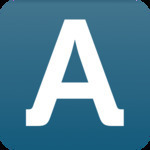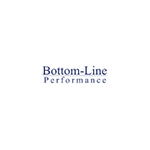Search for...
#Learning Styles Bookmarks
Published Learning Styles Bookmarks
 A Behind-The-Scenes Look At Adaptive Learning Tools
A Behind-The-Scenes Look At Adaptive Learning Tools
While we do know that adaptive learning tools help in designing interesting adaptive learning programs, how do these tools alter what each learner sees?
 Understanding The Features Of Good Interactivities In eLearning
Understanding The Features Of Good Interactivities In eLearning
Interactivities in eLearning are often limited to click-to-reveal activities. How can you ensure eLearning interactivities are instructionally sound?
 6 Online Activities To Include In Your Blended Learning Framework
6 Online Activities To Include In Your Blended Learning Framework
Blended learning involves online and classroom activities. Are you aware of these online activities that can enhance your blended learning program?
 Planning To Implement Adaptive Learning? 4 Questions To Consider
Planning To Implement Adaptive Learning? 4 Questions To Consider
What is adaptive learning? What do you need to know before going ahead with the implementation of adaptive learning?
 5 Tips to Design eLearning to Match Different Learning Styles
5 Tips to Design eLearning to Match Different Learning Styles
Want to know how to design elearning to match learning styles? Check 5 tips to design eLearning to match different learning styles.
 Webinar: New Year, New Trends in Learning & Development
Webinar: New Year, New Trends in Learning & Development
In this live session, we’ll explore the speed of change, constant innovation, and digital disruption as the workplace continues to evolve today and beyond. Hear all about the innovative learning strategies that top learning & development organizations are implementing now to succeed in the future, and get the latest information to help you take on your most critical 2018 learning needs!
 Learning Styles – A Conversation with Will Thalheimer – Part 2
Learning Styles – A Conversation with Will Thalheimer – Part 2
You’re staring at your computer screen and your heart sinks. Weeks have gone by with no input from your manager on your latest (most likely brilliant) eLearning project. What you’re staring at is an email asking for confirmation that you’ve taken into account the different learning styles of the employees required to take your training. …
 Using Differentiation in the Classroom to Support All Students | Administrate
Using Differentiation in the Classroom to Support All Students | Administrate
A quick guide on how to use differentiation in the classroom to ensure you are supporting all your students needs.
Learning Styles Don't Work - But Who Cares If They Help?
“Critics say there is no evidence that identifying an individual student's learning style produces better outcomes.” But why then, do so many e-Learning designers cite the importance of addressing learning styles in designs, and why do the collective ‘rest of us’ seem to buy into it?
 Learning Theories Gone Wild - Urban Myths that Hurt Your Learning Designs
Learning Theories Gone Wild - Urban Myths that Hurt Your Learning Designs
Our industry is rife with things that become hot trends – and then fizzle out. It’s also rife with various theories that hang around (probably due to their inclusion in a best-selling book). These theories turn into urban legends that people view as facts. They then make design decisions based on those “facts.” Let’s clear a few up.
Submit Bookmark






